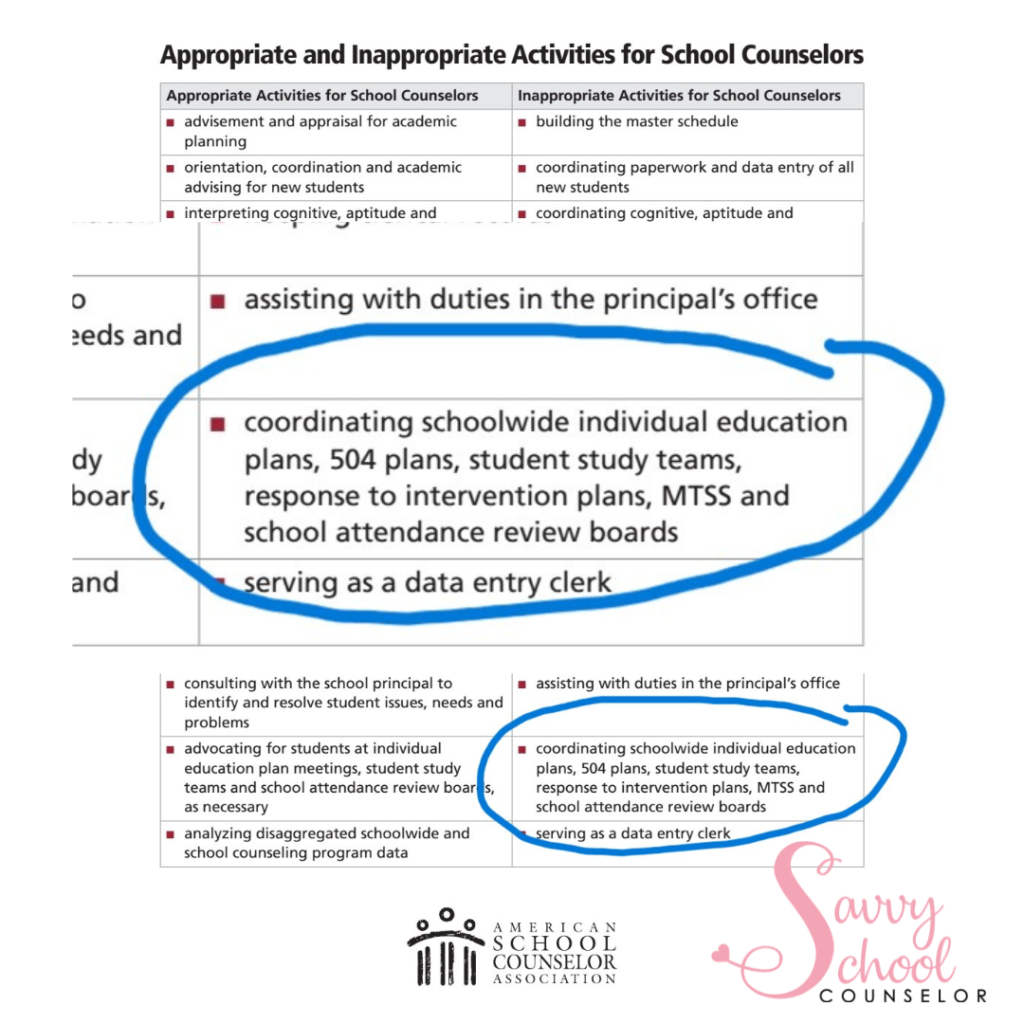
8 Tips for 504 Coordinators
Section 504 came into existence in 1973 to prohibit discrimination against individuals based on disability in any federally funded program or activity. 504 coordinators are responsible for assuring that students with disabilities are able to receive the accommodations and services at a school.
The 504 coordinator works with teachers, parents, and students to develop appropriate accommodations to help students to be successful in school activities and academically.
School counselors are often given the 504 Coordinator position. I was given the position in my very first year as a school counselor. My school district provided training for new 504 Contacts along with annual training for veteran 504 Contacts. I often found that most of the people participating in the training were school counselors and occasionally assistant principals.
The American School Counselor Association (ASCA) does not recommend school counselors take on the role of 504 Coordinator because of the complexity of the 504 process and potential conflicts of interest. As school counselors, our primary role is to provide social emotional, academic, and career counseling to all students. When the school counselor is also the 504 coordinator, the responsibility may conflict with the primary role.
The position is time-consuming and encompasses some expertise and knowledge that many counselors have not been trained in previously. Although ASCA recommends other staff members be assigned the responsibility, school counselors are typically the chosen ones.
Today, I want to share a few tips to think about as the 504 Coordinator. These are just some of the things I have done as the 504 Coordinator for many years.
504 Tips to Consider
1. Create a notebook with a list of your current cases along with a copy of each plan or the review of accommodations (ROA) form. Even though my school district uses a database that stores all forms and documents, I always found it helpful to be able to just grab my notebook for quick access to what I was looking for. At the end of the school year, I would update my caseload by removing rising 6th graders. I would prepare the most recent ROA forms for the upcoming school year.
2. At the start of the new school year, check with the person responsible for records at your school to find out about any inherited 504 students who are new to your school. The data manager is usually the first to go through new cumulative records. Work with him or her so you know how many new students need to be added to your caseload.
3. Communicate with the teacher(s) of each student on your caseload. Share a copy of the plan and/or ROA form with each of them and answer any questions those teachers may have. Make sure to document these communications in your notebook.
4. If you have new 504 students from different counties or states, make sure to review the accommodations and make sure everything will transition smoothly with the plan in your school district. Your district may require the inherited plan to become temporary until you are able to conduct a meeting with the team in order to transition the 504 to your district’s specific documentation process.
5. Make sure to also inform your school’s testing coordinator of the current testing accommodations for each student on your caseload so he or she is aware and prepared for any testing that comes up throughout the school year. As the plans are updated, be sure to pass the updated accommodations to the testing coordinator as well.
6. Add each student from your caseload to your planner/calendar a few weeks before their plan is set to expire so you have enough time to schedule an annual review or re-evaluation meeting with the parents and teachers. Doing this at the beginning of the year will help keep you on track and away from being out of compliance. Your future self will be happy to see the reminder three weeks prior to scheduling the upcoming meetings.
Additionally, don’t just rely on sending a letter home with your students. I have always reached out by phone to find out when the parent is available and what time of day works best before ever creating and sending home an invitation.
7. Complete as much of the paperwork in advance of the meeting as possible. There are some sections of the 504 meetings that need to be completed at the moment, but a lot of it can be thought through and written/typed out ahead of time. This will help the meeting flow more smoothly and time efficiently.
8. Make sure your students are aware of their accommodations. I can’t tell you how many times I’ve been in a testing situation with kids only to see them never use all of their accommodations. Their teachers should already be doing this, but do it yourself to make sure your students fully know and understand what they are.
I’ve learned on my Facebook page in our discussions that so many of you have very large caseloads and feel as though you are “told” to create 504s. Remember that 504s are for students whose major life activities (whichever they are) are substantially limited. Although a diagnosis is required, it doesn’t mean they are substantially limited.
Although being the 504 Coordinator is an extra hat you have to balance as a school counselor, if you are proactive, plan ahead, and stay organized, it can be manageable.
Stick around! You can follow Savvy School Counselor with free email updates. You can also follow my TpT Store to keep up with my latest products and freebies. Additionally, I do giveaways through My Facebook Page with my new products. Be sure to like Savvy School Counselor on Facebook and click to receive notifications so you don’t miss them!
Related Posts via Categories







